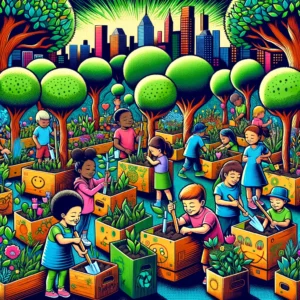Today, when eco-friendly practices have become customary, it is mandatory for businesses and customers to adopt sensible solutions in different niches. One niche where we can make careful choices is the world of packaging materials. Conventional packaging solutions often reduce pollution, but some eco-friendly and productive options are available for the wrapping industry. The Cardboard Expert has introduced such products. In this article, we’ll look into the realm of environmentally friendly packaging materials, their importance, several options available, and last but not least, some astonishing statistics to highlight their importance based on evidence.
The Environmental Impact of Packaging
1. Reducing Waste
Traditional packaging materials, e.g., plastic, Styrofoam, and non-recycled paper, form huge waste. According to a survey, almost 78 million tons of wrapping waste were produced in 2018, making up a third of general solid waste.
2. Energy Consumption
Production and disposal of conventional packaging materials use a considerable amount of energy. For example, the production of plastic causes the emission of greenhouse gases into the environment.
Eco-Friendly Packaging Alternatives
Several choices for environmentally friendly packaging materials that are getting worldwide attention are as follows:
1. Recycled Cardboard
If you want to lessen the demand for fresh raw materials, try using recycled cardboard. In the long run, this alternative solution will conserve almost 24,000 trees for each one-ton depletion in paper and cardboard waste.
2. Biodegradable Plastics
Biodegradable plastics originate from sustainable resources like cornstarch. They were created to decompose naturally and alleviate plastic pollution. They have gained traction recently, estimating the global market to grow to $6.73 billion by 2023.
3. Mushroom Packaging
The root structure of mushrooms, i.e., mycelium, is used to produce eco-friendly wrapping materials. It is an environmentally safe choice and can substitute conventional materials like Styrofoam.
4. Plant-Based Plastics (Bioplastics)
Bioplastics originate from plant sources, namely corn or sugarcane. They can be decomposed and aid in reducing the greenhouse gases related to old plastics.
Advantages of Eco-Friendly Packaging
1. Environmental Conservation
Environmentally friendly packing materials lessen the environmental impact of waste and pollution.
2. Brand Image Enhancement
Customers go for brands that practice sustainable choices, thus optimizing the brand’s statement and brand-client relationship.
3. Regulatory Compliance
Many countries have set specific regulations on packing materials for brands to adhere to sustainable options.
4. Cost-Efficiency
Though the preliminary expenditure on eco-friendly materials is a bit higher, it will prove a cost-effective solution in the long run due to minimal waste and enhanced brand reputation.
Statistics on Eco-Friendly Packaging
- According to a survey, the value of the international market for sustainable packing materials in 2020 was $168.26 billion and will grow to $233.45 billion by 2025, creating a CAGR of 8%.
- Approximately 91% of plastic garbage is not recycled, adding to pollution in oceans and dumping areas.
- Companies that prefer eco-friendly packaging observe almost a 13% elevation in brand reputation, concluding that sustainable choices are principled and rewarding.
Conclusion
Today, the modern world requires eco-friendly packing materials. Due to distressing stats on pollution and waste, it’s our collaborative duty to adopt sustainable solutions. We can lessen our environmental impact and make efforts towards a greener and more eco-friendly future. It is not your choice; conserving the earth for future generations is crucial.
Do you want to try environmentally friendly packaging materials? Try from Cardboard Expert! You will have an amazing experience.

















